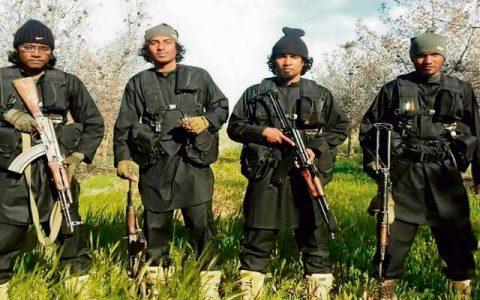
The Maldives: Are the beautiful beaches new place for growing jihadists?
“They’re fighting really well, aren’t they?” says my taxi-driver with pride when I tell him I’ve flown in from the Middle East and that I’m a journalist. Speak with Muslims in Paris, Brussels or Tunis about ISIS jihadists and they reply mortified, almost apologetically, and tell you: They’re off their heads. But in the Maldives, they’ll give you a different answer: They are heroes.
Many Western tourists don’t even know that this is a Muslim country. But in fact, outside of the Arab world, the Maldives have the highest number of fighters among ISIS’s ranks per capita: 200, more or less, out of 400,000 inhabitants. The government denies it. But each and every resident likely has a brother or cousin in Syria. While the rest of the world was watching the Olympics in August, everyone here was watching the battle of Aleppo. And rooting for al-Qaeda.
The Maldives are an archipelago of 1192 islands. But for the Maldivians, it is just one island: Malé. The islands only have a couple of shops, one school, and a tiny soccer pitch. Sometimes, residents don’t even have electricity. For all of their needs, they go to Malé. It covers 5.8 square kilometers, has 130,000 permanent residents, and a temporary population double that size. In Malé, every nook and cranny is inhabited.
Walking along one of the main avenues, the Buruzu Magu, I sneak into a gap, every bit a postcard view: a blue house, a green house and a yellow one. At the end of the alley there’s a spiral staircase. There are five living behind the first door to the right, nine behind the first on the left. The people behind the second door are all immigrants from Bangladesh; just one room with 18 living in it, sleeping in shifts.
In the next house, behind a door made out of a plank of rotten plywood, mother and daughter are chatting in the dark. Next to them, on some worn-out matting, there’s an old woman—also worn out—wheezing and groaning, her wispy grey hair looking like the filaments of a burnt-out lightbulb. There are 16 of them living here in a heap of rags and worn-out shoes, the walls patched up with jute and sheets of corrugated iron, and the stench of bodies hangs in the air.
The kitchen is a camping stove. There are no tables, chairs, nothing in the rooms—not even windows. Everything is just thrown together in a jumble, the washing hanging from the ceiling to dry. On the wall, there’s a plasma television acquired at the last election in return for a vote. The average monthly wage here is 8,000 rufiyaa (about $520), while the electrical bill reaches 7,000 rufiyaa ($450), the water bill is 4,000 rufiyaa ($260) and the rent for three rooms is 20,000 rufiyaa ($1,300).
Kinaan grew up in a house like this. With six to a room, their parents were arguing continually. The sea was their shower. He’s 31 now and he is the most notorious and feared criminal in Malé. Hang out with him and everybody will stand aside.
Malé is divided up between about thirty gangs, each one with 50 to 500 members. We are talking one tenth of the inhabitants, a fifth of all young people. In the first and most recent study on street violence, in 2009, 43 percent of those interviewed said that they didn’t feel safe even in their own houses.
Kinaan ended up in prison the first time at age 15 for getting into a fight. Ever since he was 17, he’s been a heroin-addict and an alcoholic. Even now, to make ends meet, he still sells drugs.
“Because here, no one gives you a second chance,” he says. “I’m prepared to do any kind of work, but nobody ever wanted to take me on. Not even as a dock worker. Sooner or later, we all get arrested, and all of us for drugs, because when you live ten to a room, the truth is you are living on the street. Malé is a hellhole, you have no future, nothing, and alcohol is forbidden. Heroin costs a lot less than a vodka.
And the crazy thing is that sentences are really harsh. Steal a mango and you risk getting a year inside and being branded for life. But at the same time, there’s blanket tolerance because we’re in the service of politicians. And a price list, too: $1,200 for breaking a shop-window, $1,600 for mugging a journalist. You get hired for anything: from distributing leaflets to knifing someone. And if they want to, if you can be of use to them, they’ll get you out of prison.”
Kinaan was convicted twice, but has never served time. Like his friend Naaif. And so what do you do for a living? I ask Naaif. “I’m doing 25 years of prison,” he laughs.
When you look at Kinaan, dressed in an elegent suit, it’s hard to believe he stabbed five people. But after the last time—when he had stabbed a young boy who died of his wounds—Kinaan decided to turn his life around. He has been trying to do so for ten years now. So he has taken things into his own hands and decided to give himself a second chance: he decided to go to Syria.
“It’s not difficult. Nobody stops you. They have every interest in getting rid of us. We have committed all their crimes for them, we know all their secrets. And we all want to leave. Anything is better than Malé. In Syria, if I’m killed, at least it’ll be for a good reason,” he explains.
Source: /Ynetnews





